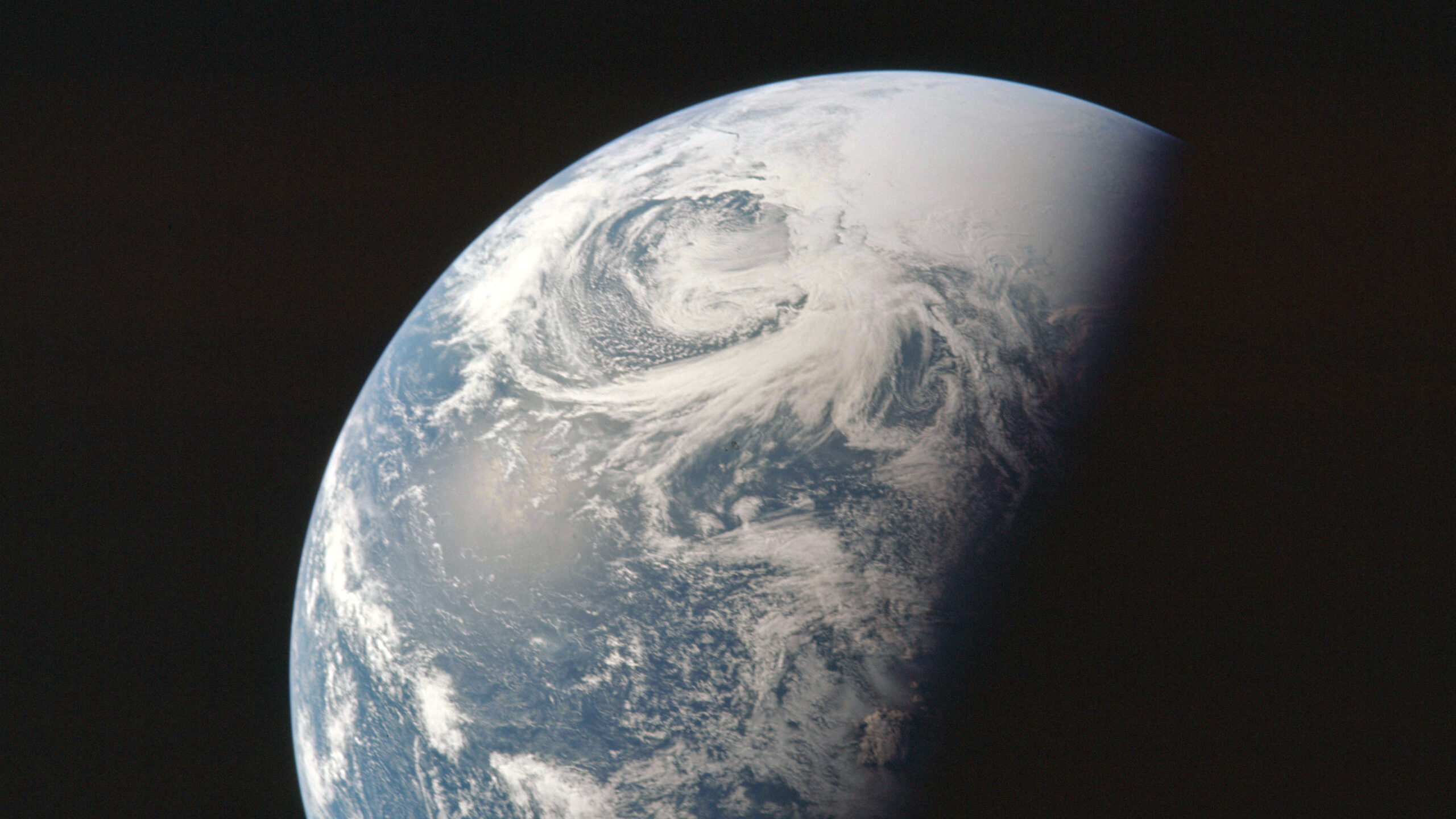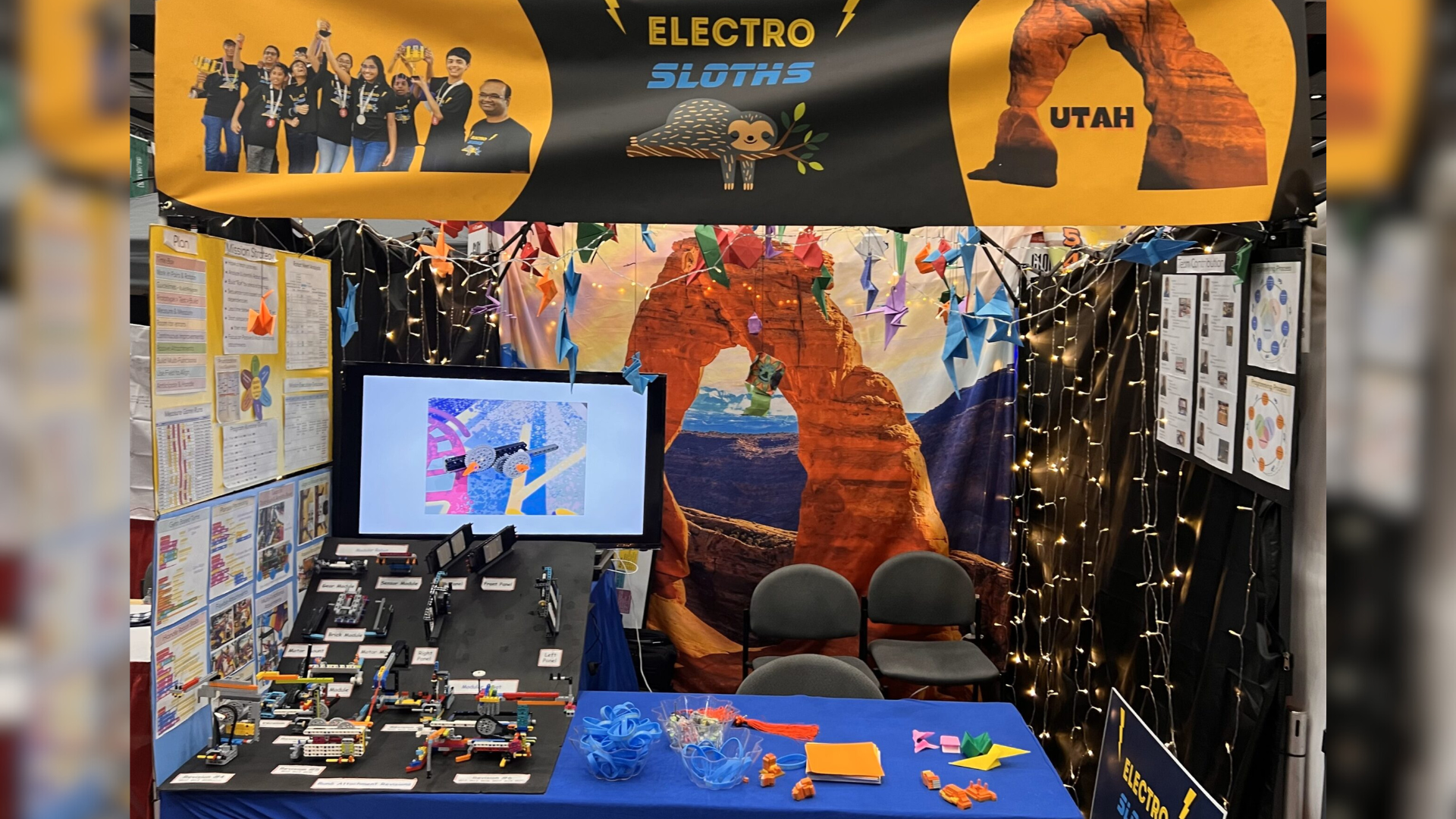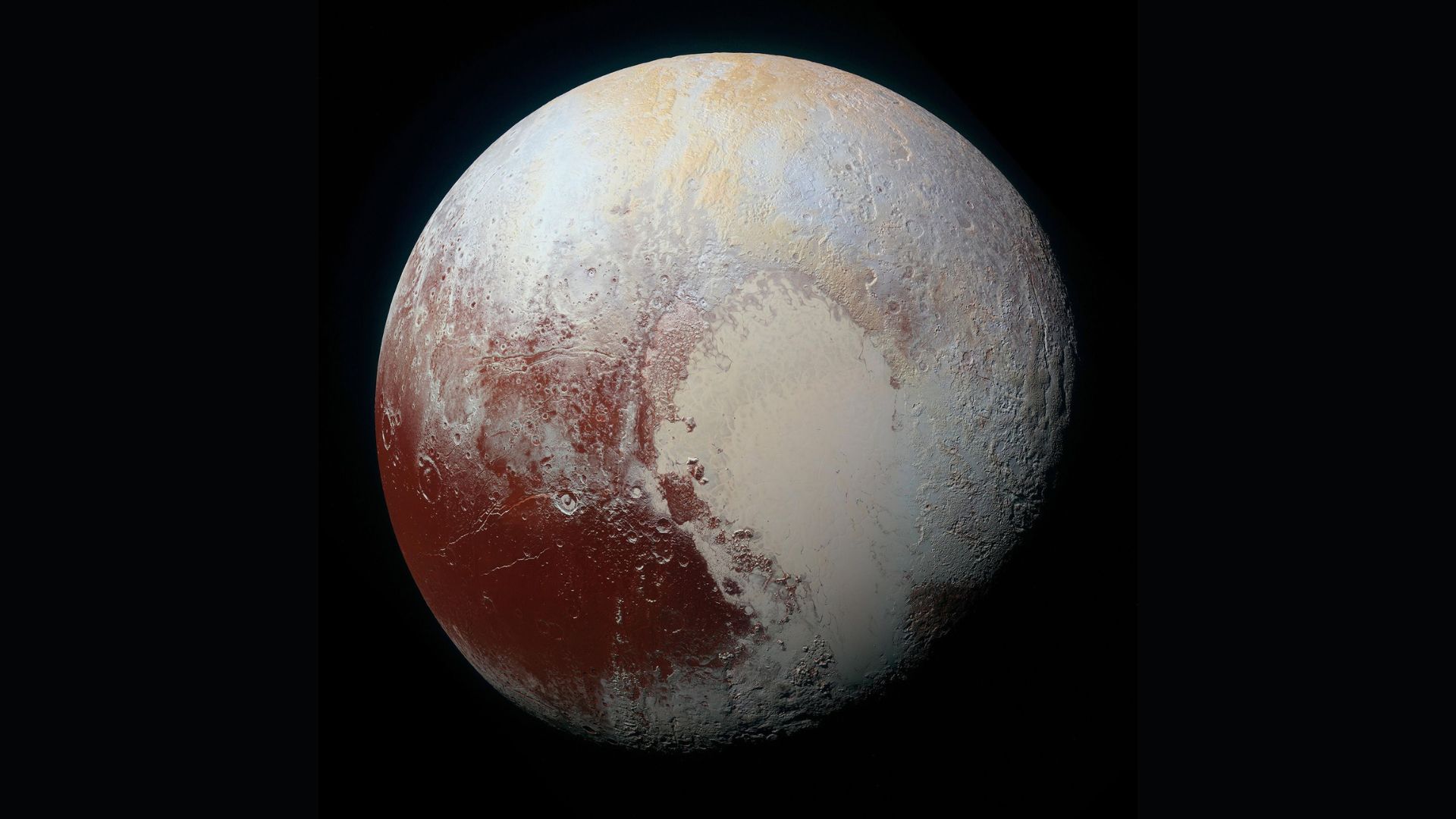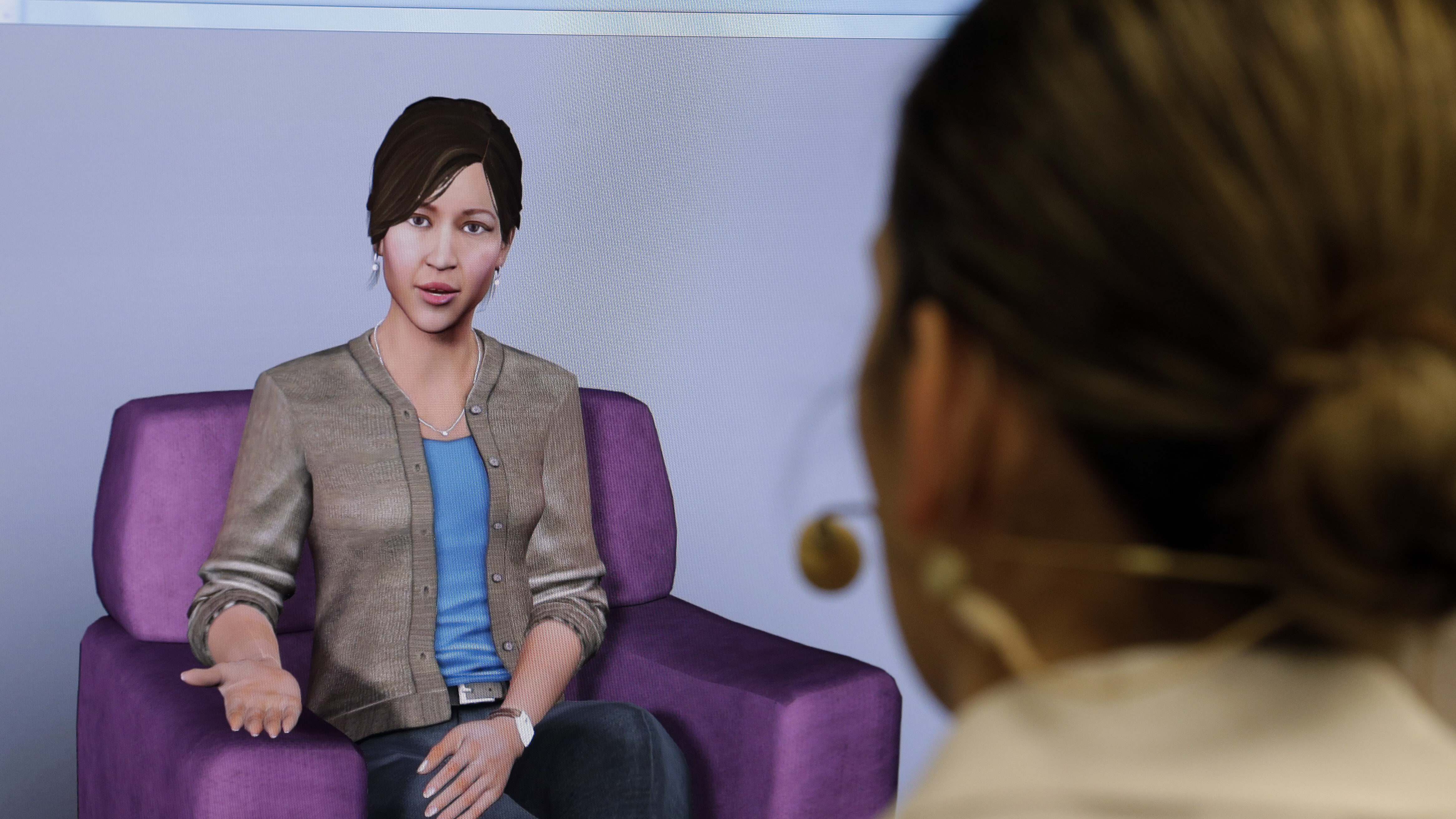Science paints a new picture of the ancient past, when we mixed and mated with other kinds of humans
Sep 24, 2023, 12:00 PM

This April 1970 photo made available by NASA shows the Earth as the Apollo 13 mission heads towards the moon. (NASA via AP)
(NASA via AP)
What does it mean to be human?
For a long time, the answer seemed clear. Our species, Homo sapiens — with our complex thoughts and deep emotions — were the only true humans to ever walk the Earth. Earlier forms, like the Neanderthals, were thought to be just steps along the path of evolution, who died out because we were better versions.
That picture is now changing.
In recent years, researchers have gained the power to pull DNA from ancient hominins, including our early ancestors and other relatives who walked on two legs. Ancient DNA technology has revolutionized the way we study human history and has quickly taken off, with a constant stream of studies exploring the genes of long-ago people.
Along with more fossils and artifacts, the DNA findings are pointing us to a challenging idea: We’re not so special. For most of human history we shared the planet with other kinds of early humans, and those now-extinct groups were a lot like us.
“We can see them as being fully human. But, interestingly, a different kind of human,” said Chris Stringer, a human evolution expert at London’s Natural History Museum. “A different way to be human.”
What’s more, humans had close — even intimate — interactions with some of these other groups, including Neanderthals, Denisovans and “ghost populations” we only know from DNA.
“It’s a unique time in human history when there are only one of us,” Stringer said.
A WORLD WITH MANY HOMININS
Scientists now know that after H. sapiens first showed up in Africa around 300,000 years ago, they overlapped with a whole cast of other hominins, explained Rick Potts, director of the Smithsonian’s Human Origins Program.
Neanderthals were hanging out in Europe. Homo heidelbergensis and Homo naledi were living in Africa. The short-statured Homo floresiensis, sometimes known as the “Hobbit,” was living in Indonesia, while the long-legged Homo erectus was loping around Asia.
Scientists started to realize all these hominins weren’t our direct ancestors. Instead, they were more like our cousins: lineages that split off from a common source and headed in different directions.
Archaeological finds have shown some of them had complex behaviors. Neanderthals painted cave walls, Homo heidelbergensis hunted large animals like rhinos and hippos, and some scientists think even the small-brained Homo naledi was burying its dead in South African cave systems. A study last week found early humans were building structures with wood before H. sapiens evolved.
Researcher also wondered: If these other kinds of humans were not so different, did our ancestors have sex with them?
For some, the mixing was hard to imagine. Many argued that as H. sapiens ventured out of Africa, they replaced other groups without mating. Archaeologist John Shea of New York’s Stony Brook University said he used to think of Neanderthals and H. sapiens as rivals, believing “if they bumped into each other, they’d probably kill each other.”
DNA REVEALS ANCIENT SECRETS
But DNA has revealed there were other interactions, ones that changed who we are today.
In 2010, the Swedish geneticist Svante Paabo and his team pieced a tricky puzzle together. They were able to assemble fragments of ancient DNA into a full Neanderthal genome, a feat that was long thought to be impossible and won Paabo a Nobel Prize last year.
This ability to read ancient DNA revolutionized the field, and it is constantly improving.
For example, when scientists applied these techniques to a pinky bone and some huge molars found in a Siberian cave, they found genes that didn’t match anything seen before, said Bence Viola, an anthropologist at the University of Toronto who was part of the research team that made the discovery. It was a new species of hominin, now known as Denisovans, who were the first human cousins identified only by their DNA.
Armed with these Neanderthal and Denisovan genomes, scientists could compare them to people today and look for chunks of DNA that match. When they did, they found clear signs of crossover.
THE NEW HUMAN STORY
The DNA evidence showed that H. sapiens mated with groups including Neanderthals and Denisovans. It even revealed evidence of other “ghost populations” — groups who are part of our genetic code, but whose fossils we haven’t found yet.
It’s hard to pin down exactly when and where these interactions happened. Our ancestors seem to have mixed with the Neanderthals soon after leaving Africa and heading into Europe. They probably bumped into the Denisovans in parts of East and Southeast Asia.
“They didn’t have a map, they didn’t know where they were going,” the Smithsonian’s Potts said. “But looking over the next hillside into the next valley, (they) ran into populations of people that looked a bit different from themselves, but mated, exchanged genes.”
So even though Neanderthals did look distinct from H. sapiens — from their bigger noses to their shorter limbs — it wasn’t enough to create a “wall” between the groups, Shea said.
“They probably thought, ‘Oh, these guys look a little bit different,’” Shea said. “‘Their skin color’s a little different. Their faces look a little different. But they’re cool guys, let’s go try to talk to them.’”
COMPLEX NEANDERTHALS
The idea that modern humans, and particularly white humans, were the pinnacle of evolution came from a time of “colonialism and elitism,” said Janet Young, curator of physical anthropology at the Canadian Museum of History.
One Neanderthal painting, created to reflect the vision of a eugenics advocate, made its way through decades of textbooks and museum displays.
The new findings have completely upended the idea that earlier, more ape-like creatures started standing up straighter and getting more complex until they reached their peak form in H. sapiens, Young said. Along with the genetic evidence, other archaeological finds have shown Neanderthals had complex behaviors around hunting, cooking, using tools and even making art.
Still, even though we now know our ancient human cousins were like us — and make up part of who we are now — the idea of ape-like cave men has been hard to dislodge.
Artist John Gurche is trying. He specializes in creating lifelike models of ancient humans for museums, including the Smithsonian and the American Museum of Natural History, in hopes of helping public perception catch up to the science.
Skulls and sculptures gazed out from the shelves of his studio earlier this year as he worked on a Neanderthal head, punching pieces of hair into the silicone skin.
Bringing the new view to the public hasn’t been easy, Gurche said: “This caveman image is very persistent.”
For Gurche, getting the science right is crucial. He has worked on dissections of humans and apes to understand their anatomy, but also hopes to bring out emotion in his portrayals.
“These were once living, breathing individuals. And they felt grief and joy and pain,” Gurche said. “They’re not in some fairyland; they’re not some fantasy creatures. They were alive.”
MANY CONNECTIONS STILL TO BE FOUND
Scientists can’t get useful genetic information out of every fossil they find, especially if it’s really old or in the wrong climate. They haven’t been able to gather much ancient DNA from Africa, where H. sapiens first evolved, because it has been degraded by heat and moisture.
Still, many are hopeful that as DNA technology keeps advancing, we’ll be able to push further into the past and get ancient genomes from more parts of the world, adding more brushstrokes to our picture of human history.
Because even though we were the only ones to survive, the other extinct groups played a key role in our history, and our present. They are part of a common humanity connecting every person, said Mary Prendergast, a Rice University archeologist.
“If you look at the fossil record, the archeological record, the genetic record,” she said, “you see that we share far more in common than what divides us.”
___
The Associated Press Health and Science Department receives support from the Howard Hughes Medical Institute’s Science and Educational Media Group. The AP is solely responsible for all content.













